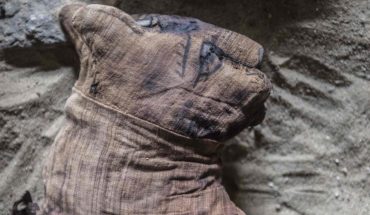Two researchers from the Millennium Institute of Integrative Biology (iBio) are initially responsible for the production of 1000 liters of a new beer, Pilsen Eubayanus. Motivated by scientific curiosity and knowledge of the country’s native yeasts and forests, sampling led them to the forests of Nothofagus pumilio, better known as lenga forests.
There were 553 barks of lenga trees that were sampled and it was possible to find the yeast Saccharomyces eubayanus, with which the concentrated yeast inoculum used in the production of the 1000 liters of beer was prepared, and, in addition, it would be the mother of the yeasts that produce lager beer in the world.
The researchers leading the process since 2017 are Roberto Nespolo, from the Austral University of Chile (UACh), and Francisco Cubillos, from the University of Santiago de Chile (Usach), also belonging to the Millennium Nucleus of the Limit of Life “LiLi” (Lili Nucleus) that studies the adaptation to the cold of Patagonian ecosystems.
Scientists highlight that the yeast Saccharomyces eubayanus provides a very marked phenolic profile, its fermentation performance is good and its consumption of sugars from the must is high.
“The yeast that was used for the preparation of these 1000 liters is an improved strain of Saccharomyces eubayanus which has been selected in the laboratory to make it better and more competitive for the brewing industry,” they say.
Unique beer
The 1000 liters of Pilsen Eubayanus beer is a milestone within the framework of the FIC 20-32 project “Supporting the economic reactivation of Craft Breweries of Native Strains”, but this new beer is also postulated to compete in the Copa Cervezas de América, to be held in Valdivia on October 24 to 30.
“Our way is to reach the Copa de Cervezas de América with a beer of denomination of origin, that is the objective of this alliance between Kunstmann, Sayka and the Universities,” explained Nicolás Sandoval, owner of Sayka brewery.
Regarding the 1000 liters of Pilsen Eubayanus beer, the owner of Sayka, said he was happy because he has received very good comments about the result, “it is to the taste of the consumer” and also announced that the collaborative work will continue.
“We are very happy and proud to have been part of the elaboration of this original beer,” said Alejandro Kunstmann, general manager Cervecería Kunstmann.
“It is an instance driven through fundamental pillars in which we make synergy, such as collaboration and innovation, to contribute to the development and beer growth of the region,” he added.
Regional milestone
The regional governor, Luis Cuvertino, said that there is “an ecosystem with great innovation capabilities in the field of craft beer. As a region we are making an important commitment in this project that seeks to strengthen the industry, through the creation of a yeast native to the Los Ríos Region, which will generate a regional beer and establish a specialized laboratory.”
“We have high expectations in this initiative, which we hope will allow us to support and enhance this important productive activity, which, without a doubt, generates associated positive effects, such as, for example, the promotion of tourism, support for local trade and the generation of added value to local products,” he added.
From the UACh, the Vice-Rector for Research, Development and Artistic Creation (Vidca), Mylthon Jiménez, expressed that the work that is being done on technology transfer between the university, the team led by Dr. Nespolo, and the beer producers is a source of pride.
“It is an area of innovation that is significantly impacting the development of the brewery with regional territorial identity,” he said.
“We are grateful that the breweries have opened their doors so that scientific research actions of the highest level also occur in their facilities, that as a university we are very interested in highlighting, promoting and congratulating” concluded the vice-rector.
Pilsen Eubayanus: the new native yeast beer created by collaboration of scientists and regional breweries
April 18, 2022 |





